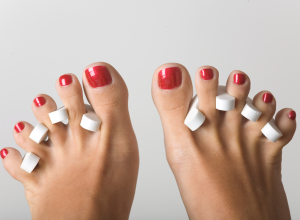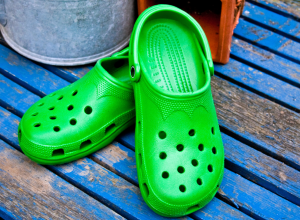
Hammertoes
A hammertoe is a deformity of the toes characterized by the second, third, fourth and/or fifth toes bent downward at the middle (interphalangeal) joint. When caught early on, hammertoes can usually be corrected with conservative treatment methods. But when left untreated, the deformity could become permanent and may require surgery to re-position the stiff toes.
Symptoms
Usually a person can tell if he or she has hammertoes based on the appearance of the second, third, fourth and/or fifth toes, which will be bent downward at the middle joint so that they appear like little hammers. The affected toes may also have corns and calluses due to their abnormal position, which can lead to rubbing and irritation when one walks, runs or wears shoes. In fact, wearing any type of shoe is usually painful for people with hammertoes, who also often experience inflammation, redness and/or a burning sensation in the toe area.
Causes
Most cases of hammertoe are caused by wearing shoes that don’t fit properly or that push the toes together into a tight toe box. Toes that are constantly bent into unnatural positions oftentimes tighten and lose their ability to stretch out.
In some cases, hammertoe is due to a muscle/tendon imbalance that leaves the toes pointing downward due to the structural changes in the foot that occur over a long period of time.
Rarely, hammertoe is caused by earlier trauma to the toe area. It can also be congenital (inherited and present at birth).
Treatment
Having hammertoes is a progressive condition, and the affected toes will only get worse — not better — without treatment. When caught early on, most cases of hammertoe can be corrected with simple measures. Treatment usually includes switching to comfortable, properly fitted shoes with wide toe boxes, engaging in foot and toe stretches to help keep the muscles flexible and possibly wearing cushions, straps and/or orthotic devices while the toes slowly improve. Sometimes corticosteroid injections and oral nonsteroidal anti-inflammatory drugs (NSAIDs) are recommended to control pain and swelling.
If left untreated, a mild case of hammertoe may become a permanent toe deformity that can lead to repeated corns, calluses and open sores. Surgery is an available option to help re-position the toes, but it is rarely recommended. Surgery for hammertoes usually leads to increased stiffness, swelling and toes that are longer or shorter than they were before. Even after surgery, it is possibly for hammertoes to come back. Your podiatrist or orthopaedic surgeon can help you decide if hammertoe surgery is the best option for you.
Notice concerning medical entries:
Articles having medical content shall serve exclusively for the purpose of general information. Such articles are not suitable for any (self-) diagnosis and treatment of individual illnesses and medical indications. In particular, they cannot substitute for the examination, advice, or treatment by a licensed physician or pharmacist. No replies to any individual questions shall be effected through the articles.










